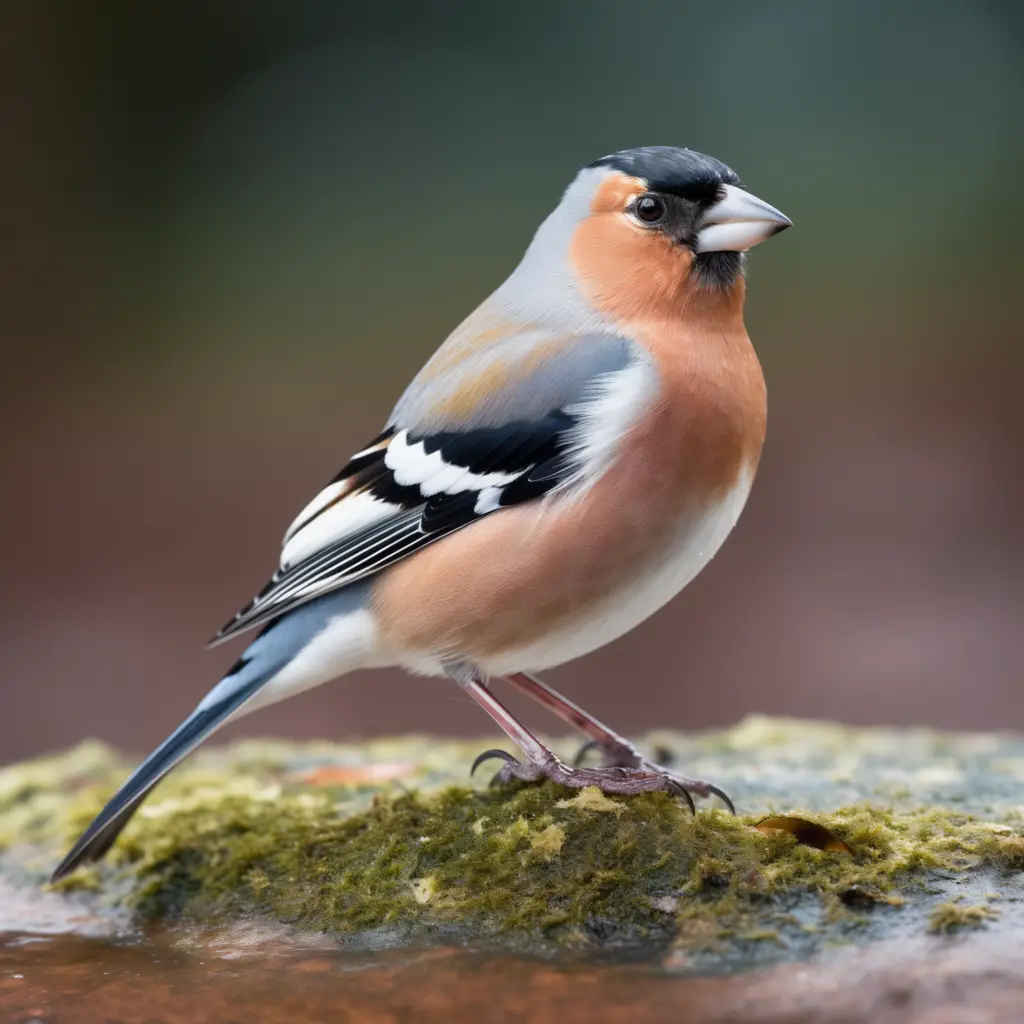
Chaffinches, known scientifically as Fringilla coelebs, are small passerine birds that are a common sight across Europe, Asia, and North Africa. With their striking plumage and melodious song, they have captivated the hearts of bird enthusiasts around the globe. However, the idea of keeping chaffinches as pets is met with mixed feelings due to various factors ranging from legal to ethical and practical considerations. Here, we delve into the pros and cons of keeping chaffinches as pets to help potential bird owners make an informed decision.
Pros
Aesthetic Appeal
The aesthetic appeal of Chaffinches, with their vivid plumage and enchanting song, represents a captivating spectacle of nature’s beauty, drawing enthusiasts and bird watchers into a world where color and melody converge. These birds, known scientifically as Fringilla coelebs, embody an element of the natural world that appeals not only to our senses but also to our innate appreciation for the exquisite and the serene.
Visual Splendor
The Chaffinch’s aesthetic allure begins with its striking appearance. The male Chaffinch, particularly during the breeding season, showcases a remarkable array of colors. Its blue-grey cap and rust-red underparts are complemented by a distinctive black tail with white edges and a greenish rump. This vibrant palette not only serves a practical purpose in attracting mates but also provides a visual feast for human observers.
The female, though more subdued in coloration, carries her own elegance, with soft browns and greys that blend harmoniously with the natural environment. The intricate patterns and hues of both sexes reflect the remarkable diversity and beauty of avian life, inviting onlookers to pause and appreciate the finer details of their appearance.
Melodic Harmony
Beyond their visual appeal, Chaffinches possess a melodious song that adds a rich auditory layer to their aesthetic presence. Each male has a unique song, a complex arrangement of trills and chirps that fill the air with a natural symphony.
These songs, often heard during the early morning or late evening, evoke a sense of peace and tranquility.
The Chaffinch does not merely sing for the sake of mating or territorial claims; its song contributes to the ambiance of its habitat, creating a soundscape that enriches the environment and soothes the human soul. The ability to bring such harmony to their surroundings speaks to the deep connection between these birds and the health of the ecosystems they inhabit.
Symbolism and Inspiration
The aesthetic appeal of the Chaffinch extends into the realm of symbolism and inspiration. For many cultures, birds are symbols of freedom, hope, and the untamed beauty of nature. The Chaffinch, with its bright colors and uplifting song, embodies these qualities, reminding us of the resilience and splendor of the natural world.
Artists, poets, and musicians have long drawn inspiration from birds like the Chaffinch, using their imagery and songs to evoke emotions and convey messages that resonate with the human experience.
Connection to Nature

Engaging with the aesthetic appeal of Chaffinches encourages a deeper connection to nature. Observing these birds, whether in the wild or through responsible birdwatching practices, allows individuals to step away from the hustle and bustle of modern life and reconnect with the natural world.
This connection is not merely about the joy of seeing or hearing a beautiful bird; it is about understanding our place within a larger ecological context and recognizing the importance of preserving these experiences for future generations.
In conclusion, the aesthetic appeal of Chaffinches transcends their physical beauty, touching upon the profound ways in which nature enriches the human experience. Through their vivid colors and melodious songs, Chaffinches invite us to explore the beauty of the natural world, offering moments of reflection, inspiration, and a deeper appreciation for the delicate balance of life on our planet.
As we marvel at their splendor, we are reminded of the value of conservation and the role each of us plays in safeguarding the beauty and diversity of nature for years to come.
Pleasant Song
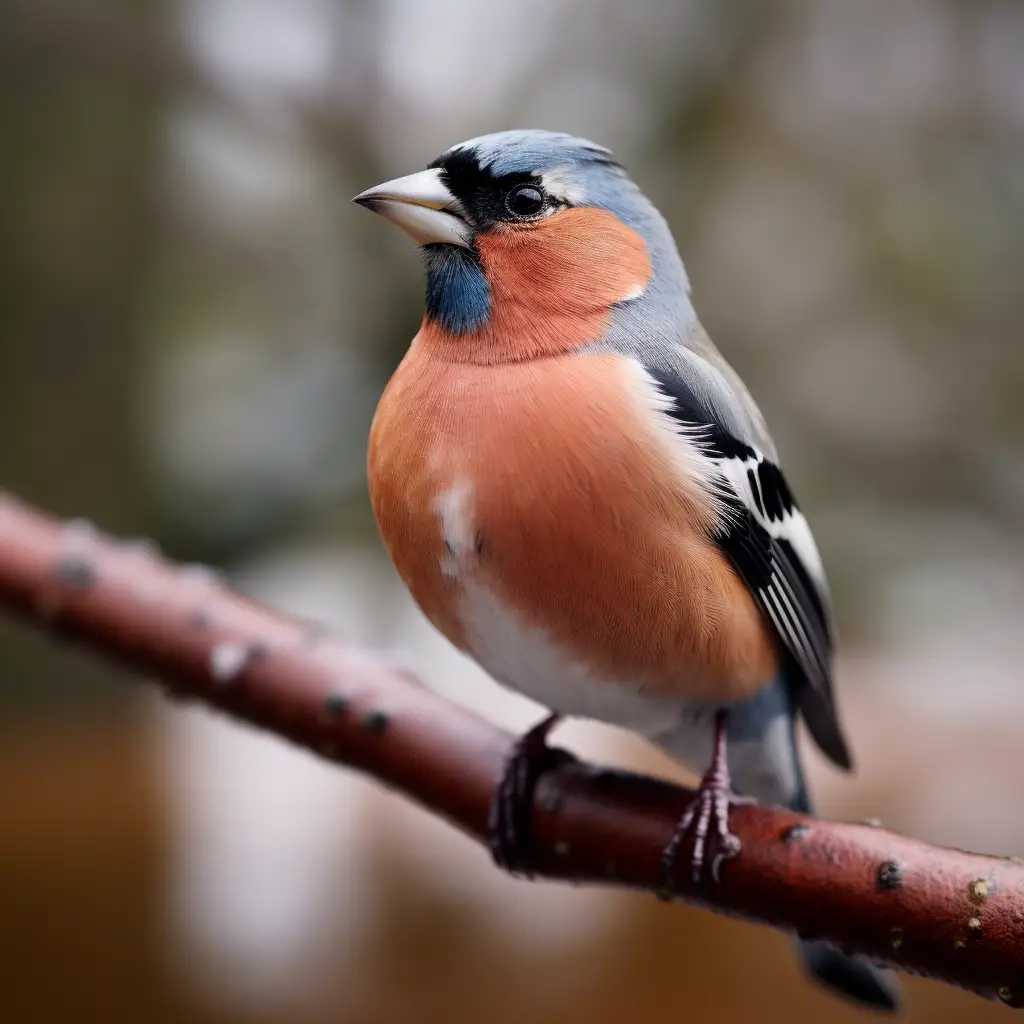
The pleasant song of the Chaffinch, Fringilla coelebs, stands as a hallmark of the species, offering not just a testament to the bird’s beauty but also an aural connection to the natural world that many find deeply soothing and emotionally enriching. This element of their existence transforms environments, turning ordinary gardens and woodlands into arenas of melodic complexity and serene soundscapes that captivate and charm listeners.
The Essence of the Chaffinch’s Song
Chaffinches are celebrated for their rich and varied songs, a distinctive feature that distinguishes them within the avian world. The male Chaffinch, in particular, is responsible for the majority of these vocal performances, especially prominent during the breeding season when songs are used to attract mates and assert territorial boundaries.
Each song comprises a series of high-pitched notes followed by a trill, with variations that are as individual as the birds themselves. This uniqueness allows individuals to be recognized by their song, a fascinating aspect for birdwatchers and researchers alike.
Emotional and Psychological Impact
The impact of the Chaffinch’s song extends beyond mere enjoyment, touching on the emotional and psychological well-being of those who listen. Nature sounds, including bird songs, have been shown to reduce stress and anxiety, promoting a sense of peace and well-being.
The Chaffinch’s melodious tunes, with their complex arrangements and soothing tones, can serve as a natural form of therapy, helping to calm the mind and elevate the spirit. In our increasingly urbanized and noisy world, the pure, natural sound of a Chaffinch singing provides a rare and valuable oasis of tranquility.
A Connection to Seasons and Time
The song of the Chaffinch also serves as a marker of time and season. Their singing becomes most prominent in spring, signaling the end of winter and the arrival of warmer days. This cyclical nature of their song connects us to the rhythms of the natural world, reminding us of the passage of time and the changing of seasons. For many, the first songs of the Chaffinch in late winter or early spring evoke a sense of renewal and hope, embodying the essence of spring’s rejuvenating power.
Conservation and Habitat Awareness
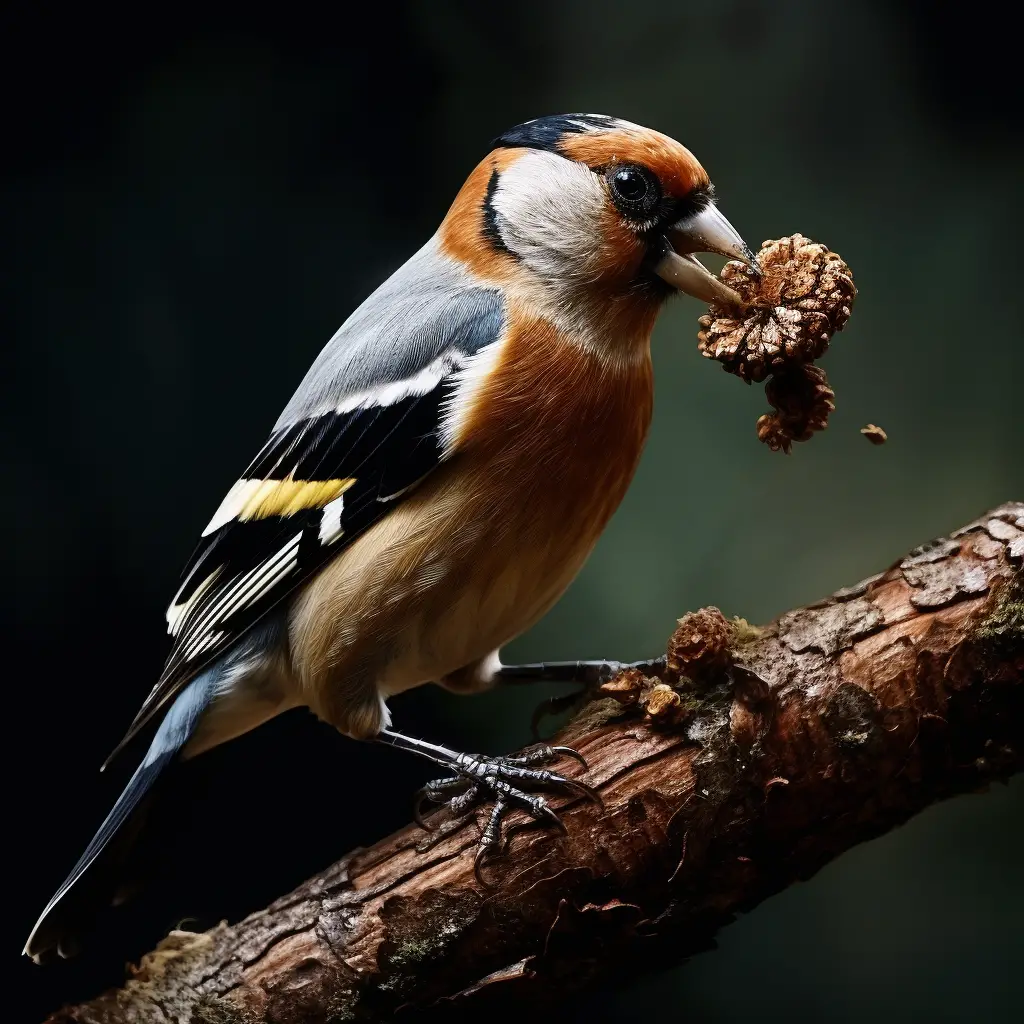
Appreciation for the Chaffinch’s song also fosters a greater awareness of the importance of conservation and habitat protection. As their melodies fill the air, they remind us of the beauty that could be lost without efforts to protect natural habitats and biodiversity. The presence of singing Chaffinches indicates healthy, thriving ecosystems, underscoring the need for environmental stewardship to ensure that future generations can also enjoy this delightful birdsong.
The pleasant song of the Chaffinch is more than just a beautiful background noise; it is a profound force that connects humans to the natural world, promotes emotional well-being, and encourages a deeper appreciation for the environment.
As we listen to the intricate melodies of the Chaffinch, we are reminded of the intricate web of life and our place within it, inspiring us to take action to preserve the natural beauty that surrounds us. The Chaffinch’s song, therefore, is not just a simple tune but a powerful symbol of the beauty, complexity, and resilience of nature.
Opportunity for Observation and Learning
Keeping a chaffinch allows for close observation of its behaviors and habits, offering insights into its life cycle, diet, and social interactions. It can be an educational experience for children and adults alike, fostering a deeper appreciation for nature and wildlife.
Cons
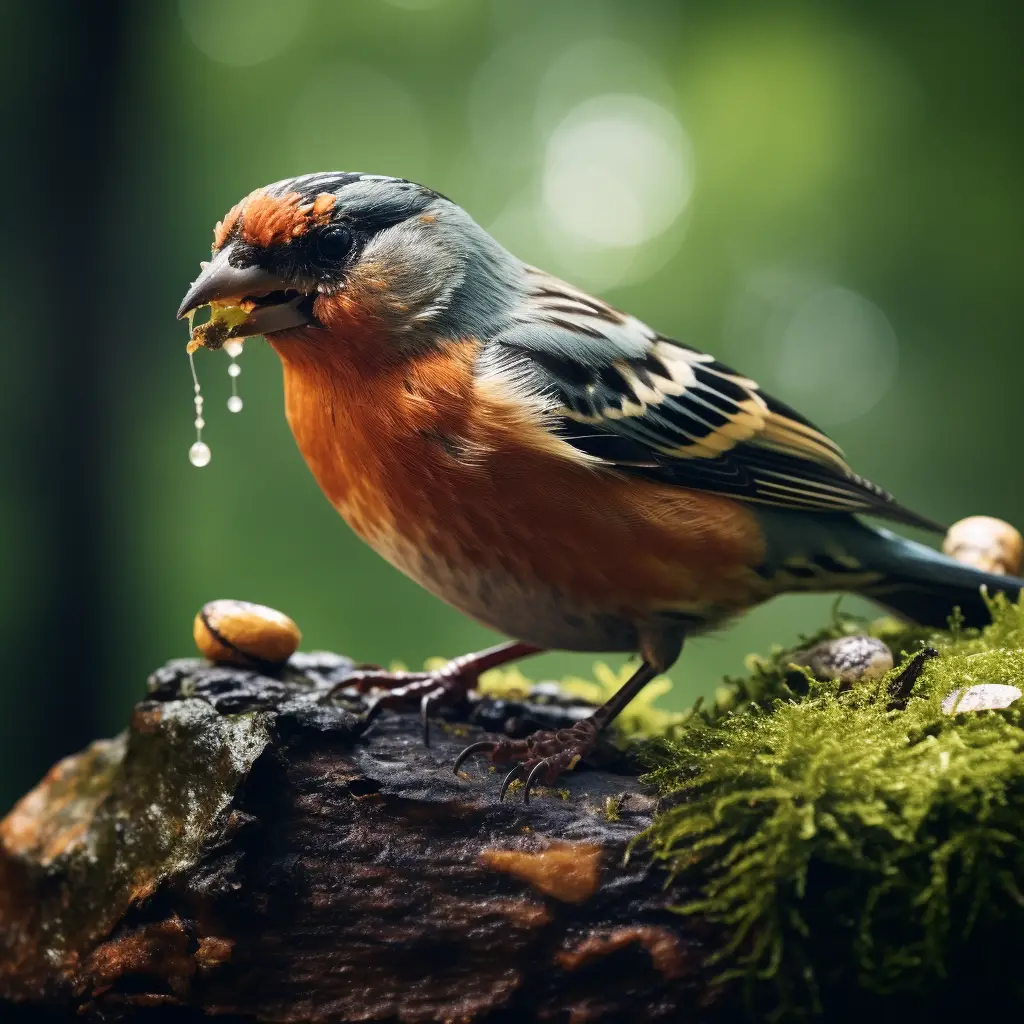
Legal and Ethical Concerns
The contemplation of keeping Chaffinches, Fringilla coelebs, as pets brings to the forefront significant legal and ethical concerns that potential bird owners must consider. These concerns stem from the broader implications of wildlife conservation, animal welfare, and the integrity of natural ecosystems. Understanding these factors is crucial for anyone considering the captivity of wild birds for personal enjoyment.
Legal Considerations
Across many jurisdictions, the capture and keeping of wild Chaffinches as pets are subject to stringent regulations or outright prohibitions. These legal frameworks are designed to protect native bird populations and preserve biodiversity.
They are informed by international treaties such as the Convention on International Trade in Endangered Species of Wild Fauna and Flora (CITES), as well as local wildlife protection laws. Ignorance of these laws can result in significant penalties, including fines and legal action, underscoring the importance of familiarizing oneself with applicable regulations before attempting to keep a Chaffinch as a pet.
Ethical Implications
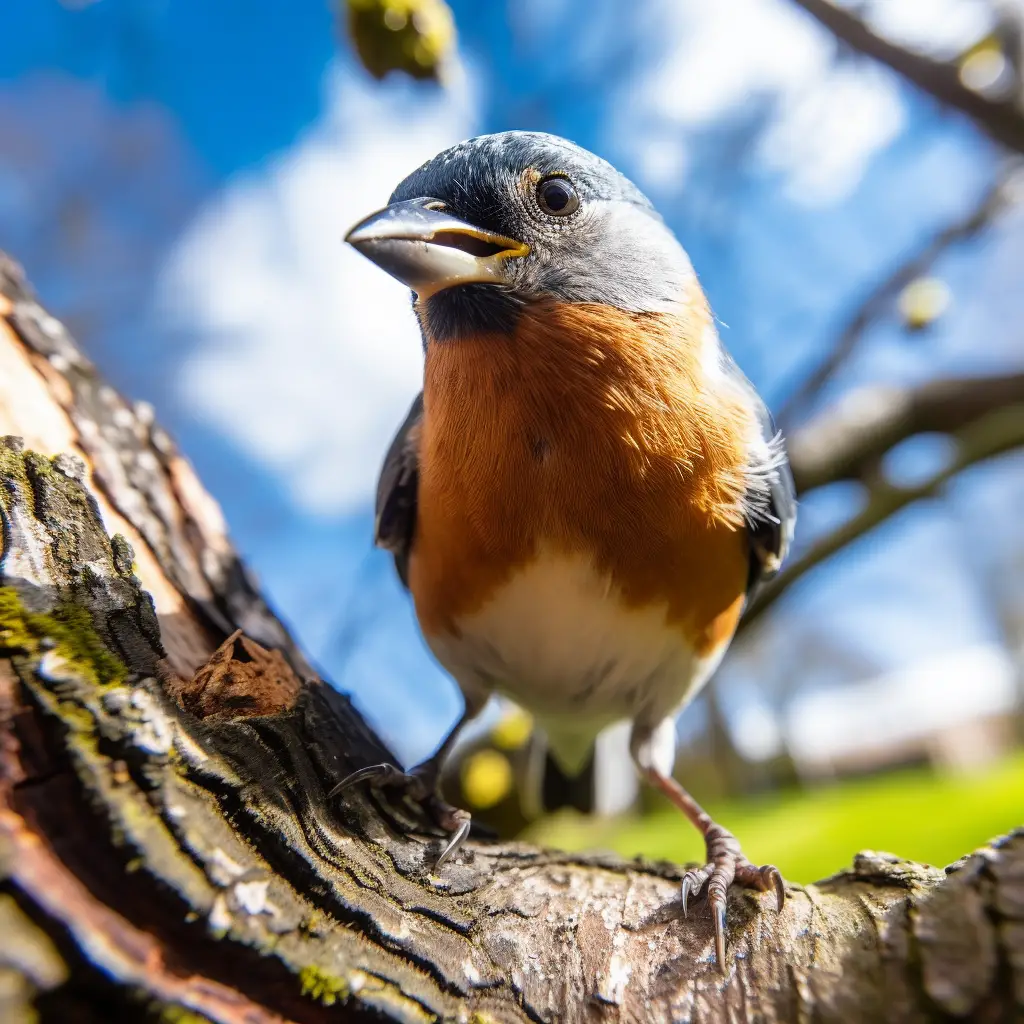
Beyond the legalities, there are profound ethical considerations in capturing and confining wild birds. Chaffinches, like many wild birds, have evolved over millennia to thrive in specific natural habitats, engaging in complex behaviors that are difficult to replicate in captivity. Removing these birds from their natural environments for the sake of human companionship raises questions about the impact on their well-being and the morality of denying them their freedom for our entertainment.
Ethical concerns also extend to the potential impact on wild populations. Even species not currently considered endangered could be threatened by unregulated capture for the pet trade, leading to declines in natural populations and disrupting ecosystem balance. Such actions contradict conservation efforts aimed at preserving species and habitats for future generations.
Impact on Natural Ecosystems
The removal of Chaffinches from their natural habitats can have unintended consequences on local ecosystems. Birds play critical roles in their environments, such as controlling insect populations and contributing to the pollination and dispersion of plants. The absence of these natural regulators due to capture and captivity can lead to ecological imbalances, demonstrating how individual actions can ripple through the ecosystem with negative effects.
Responsible Bird Enthusiasm

For those genuinely passionate about Chaffinches and their well-being, there are responsible ways to engage with and appreciate these birds without contributing to the problems associated with keeping them as pets. Birdwatching, supporting conservation efforts, and creating bird-friendly environments in gardens and communities are all ways to enjoy the beauty and song of Chaffinches while respecting their natural lifestyles and contributing positively to their conservation.
The legal and ethical concerns surrounding the keeping of Chaffinches as pets highlight the complex relationship between humans and wildlife.
They remind us of our responsibility to protect and preserve the natural world, not just for our enjoyment but for the sake of biodiversity and the health of ecosystems. By choosing to engage with wild birds in ethical and conservation-minded ways, we can ensure that the melody of the Chaffinch continues to grace our environments without compromising their freedom or well-being.
Specialized Care Requirements
Keeping Chaffinches, or any wild bird, as pets involves navigating a complex set of specialized care requirements that go beyond the basics of food, water, and shelter. These needs are intrinsic to the bird’s health, happiness, and well-being, and they underscore the challenges of attempting to replicate a wild bird’s natural environment and diet in a domestic setting. For Chaffinches, which thrive in varied natural habitats across Europe, Asia, and North Africa, the transition to living in captivity can be particularly stressful and demanding, both for the bird and its caretaker.
Dietary Needs
Chaffinches have a diverse diet that changes with the seasons, primarily consisting of seeds, insects, and certain types of fruit. In the wild, they exhibit foraging behavior that is crucial not only for their nutrition but also for their mental stimulation and physical health. Replicating this diet in captivity requires a deep understanding of their nutritional needs and the provision of a variety of foods to prevent malnutrition and ensure a balance of essential nutrients. This may involve sourcing specific seeds, live or frozen insects, and supplements to mimic as closely as possible the variety they would encounter in their natural environment.
Environmental Enrichment
Creating an appropriate living environment for a Chaffinch is about more than just providing a cage. These birds are accustomed to wide-open spaces, complex landscapes, and the freedom to fly and explore. A captive environment should, therefore, include opportunities for flight within large aviaries, as well as elements that mimic natural features such as branches, foliage, and varied perching spots. Environmental enrichment is crucial for preventing boredom and stress, promoting natural behaviors, and ensuring physical and mental well-being. This might include rotating toys, introducing foraging opportunities, and even incorporating auditory stimulation through natural sounds.
Social Needs
Chaffinches are naturally social creatures, with intricate social behaviors observed in the wild, especially during mating seasons. The isolation of a single Chaffinch can lead to loneliness and stress, potentially manifesting in behavioral issues or health problems. Ideally, keeping them in pairs or groups can help meet their social requirements, though this introduces additional complexities in managing their interactions and ensuring compatibility among individuals.
Health Care
Access to veterinary care knowledgeable in avian medicine is essential for the well-being of captive Chaffinches. They can be susceptible to a range of health issues, some of which may not be immediately apparent to someone not versed in bird health. Regular health check-ups, vaccinations, and parasite control are part of the ongoing care required. Additionally, the potential for stress-induced conditions means that a caregiver must be vigilant for signs of illness or distress, which can be subtle and easily overlooked.
Legal and Ethical Considerations
Beyond the practical aspects of care, potential owners must navigate the legal and ethical implications of keeping a wild bird in captivity. This includes ensuring that their acquisition and care comply with local wildlife protection laws, considering the impact of their removal from the wild, and evaluating whether the needs of the bird can truly be met in a domestic setting.
The specialized care requirements for keeping Chaffinches highlight the complexities and ethical considerations of maintaining wild birds in captivity. These needs serve as a reminder of the significant responsibility and commitment involved in providing a suitable environment that respects the bird’s natural habits and well-being. For those considering a Chaffinche as a pet, it’s crucial to reflect on whether these requirements can be adequately met and to explore alternative ways to appreciate these birds without compromising their quality of life.
Health Issues
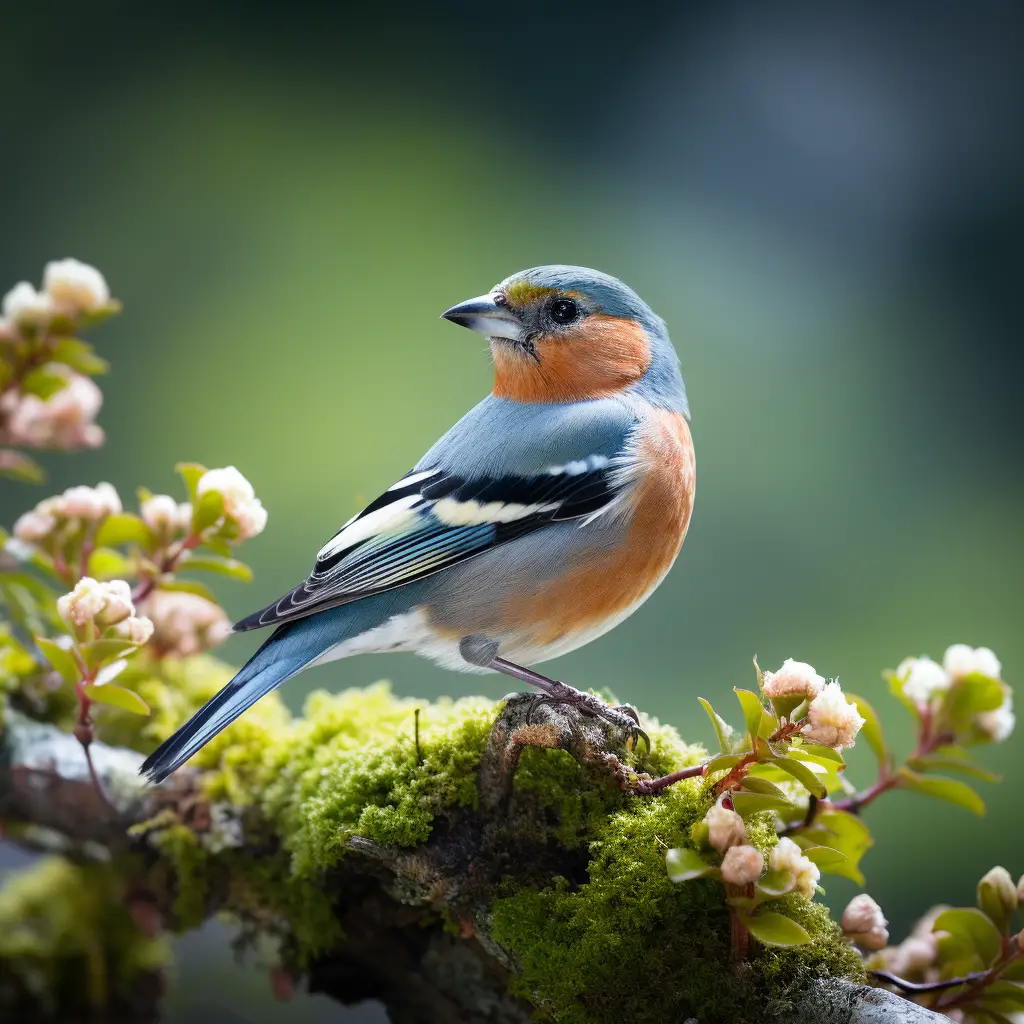
The decision to keep Chaffinches or any wild birds as pets must be accompanied by a thorough understanding of the potential health issues they may face in captivity. These issues not only impact the well-being of the birds but also require a commitment from the caregiver to provide specialized care. While Chaffinches are resilient birds in their natural habitats, the stress of captivity and the challenges of meeting their environmental and dietary needs can lead to a range of health concerns.
Stress-Related Conditions
One of the most significant challenges faced by Chaffinches in captivity is stress. Unlike domesticated pets, wild birds are not adapted to living in confined spaces or interacting closely with humans. This stress can manifest in several ways, including feather plucking, self-mutilation, and other behavioral problems. Chronic stress can also suppress the immune system, making the bird more susceptible to diseases.
Nutritional Deficiencies
Replicating the Chaffinch’s natural diet in captivity is challenging. In the wild, these birds consume a varied diet of seeds, insects, and fruits, which provides them with a balanced intake of nutrients. In captivity, they might not receive the diversity or quality of food needed for optimal health, leading to nutritional deficiencies. Common issues include calcium deficiency, which can affect bone health and lead to problems like soft eggshells in breeding females, and vitamin A deficiency, which can cause respiratory problems and affect overall health.
Parasites and Infectious Diseases
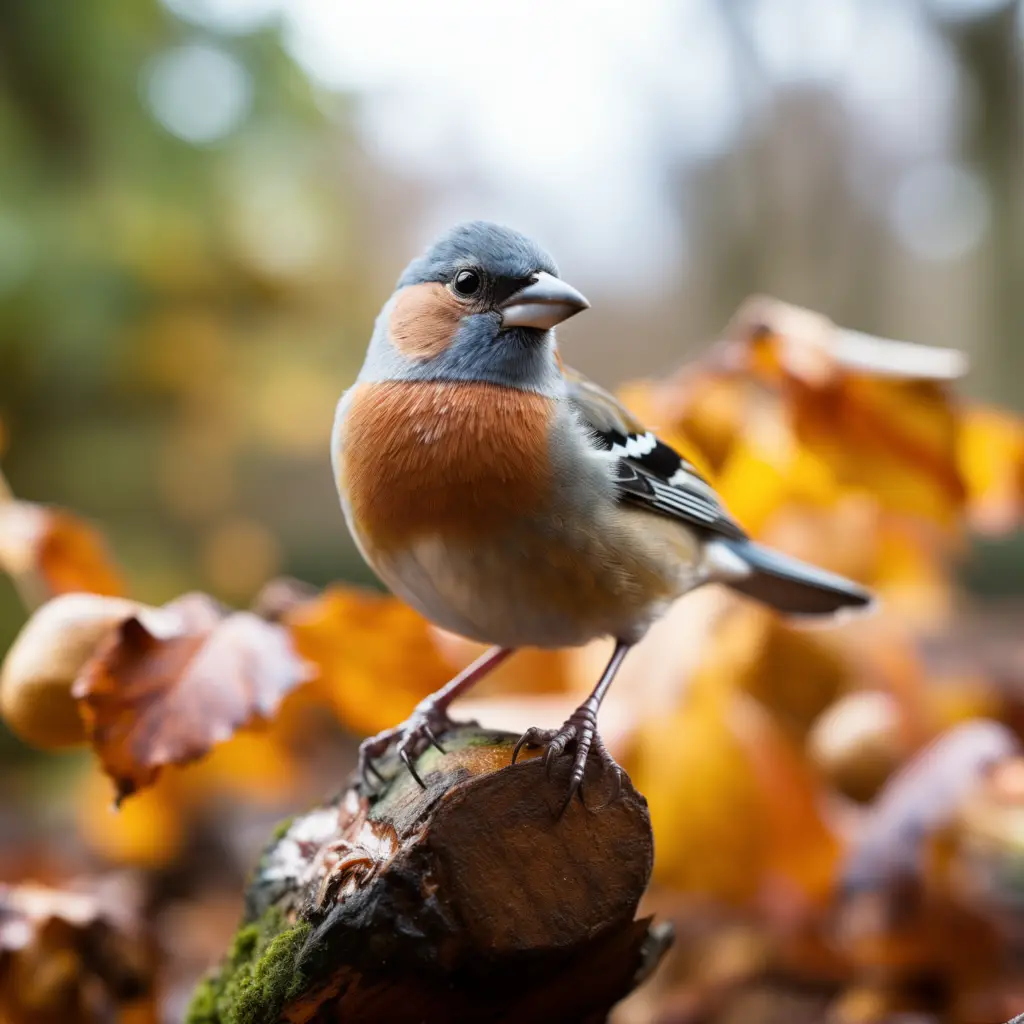
Chaffinches, like all birds, can be hosts to a variety of internal and external parasites, including mites, lice, and worms. In the close quarters of captivity, where stress may compromise a bird’s immune system, these parasites can flourish, leading to poor health and discomfort. Furthermore, infectious diseases, such as avian pox and respiratory infections, can be more easily transmitted in a captive environment, especially if birds are kept near one another without proper quarantine measures.
Environmental Health Issues
The environment in which a captive Chaffinch is kept can also contribute to health issues. Inadequate space for flight and exercise can lead to obesity and associated health problems. Poorly maintained cages or aviaries can become breeding grounds for bacteria and fungi, leading to respiratory and skin diseases. Exposure to household toxins, such as fumes from nonstick cookware or scented candles, can be fatal to birds, who have highly sensitive respiratory systems.
Preventive Care and Management
To mitigate these health issues, potential Chaffinch caretakers must be prepared to invest in preventive care and management. This includes providing a well-balanced diet, enriched and spacious living conditions, regular health check-ups with an avian veterinarian, and vigilant monitoring for signs of illness or distress. It’s also essential to educate oneself on the specific needs of Chaffinches and to remain committed to maintaining a high standard of care throughout the bird’s life.
The health issues associated with keeping Chaffinches in captivity underscore the complexity of caring for wild birds as pets. They highlight the need for prospective owners to carefully consider their ability to meet these birds’ specialized care requirements. For those passionate about Chaffinches, engaging in conservation efforts or birdwatching may offer a more ethical and sustainable way to appreciate these beautiful creatures without subjecting them to the risks of captivity.
Limited Interaction
Unlike domesticated pets such as dogs and cats, chaffinches do not typically enjoy or seek out human interaction. They are wild animals at heart, and their instinctive wariness of humans can make them difficult to tame. Those looking for a pet to cuddle or play with may find chaffinches unsuitable.
Conservation Concerns
The chaffinch population, while currently stable, could be impacted by the pet trade if demand increases. Removing birds from the wild can contribute to population declines and disrupt local ecosystems. Conservation should be a priority over the desire to keep these birds as pets.
Conclusion
While the allure of having a chaffinch as a pet is understandable, it’s crucial to weigh the aesthetic and educational benefits against the legal, ethical, and practical implications. For those genuinely interested in chaffinches, participating in birdwatching or supporting conservation efforts may be more fulfilling and responsible ways to enjoy these beautiful birds.
If you’re set on keeping a bird as a pet, consider species that are domesticated and bred for companionship, ensuring they can live happily and healthily in a home environment.
Before making a decision, research thoroughly and consider all aspects of chaffinch care and the impact on the bird and the environment. Responsible pet ownership starts with making informed choices that prioritize the well-being of the animals and the natural world they inhabit.





